Looking for ways to stop nematodes from damaging your tomatoes this year – and keep them from ruining future crops as well?
Most people are familiar with common tomato pests like aphids, tomato hornworms, whiteflies, and even tomato fruitworms. But there is also a hidden parasitic pest that can lurk beneath the soil’s surface and cause damage to the plant’s roots. The parasite is known as a Root Knot Nematode.
Nematodes can cause massive damage to tomatoes in your garden. Not only do they ruin this year’s crops, but left unchecked, they can easily overwinter to infest future plants as well.
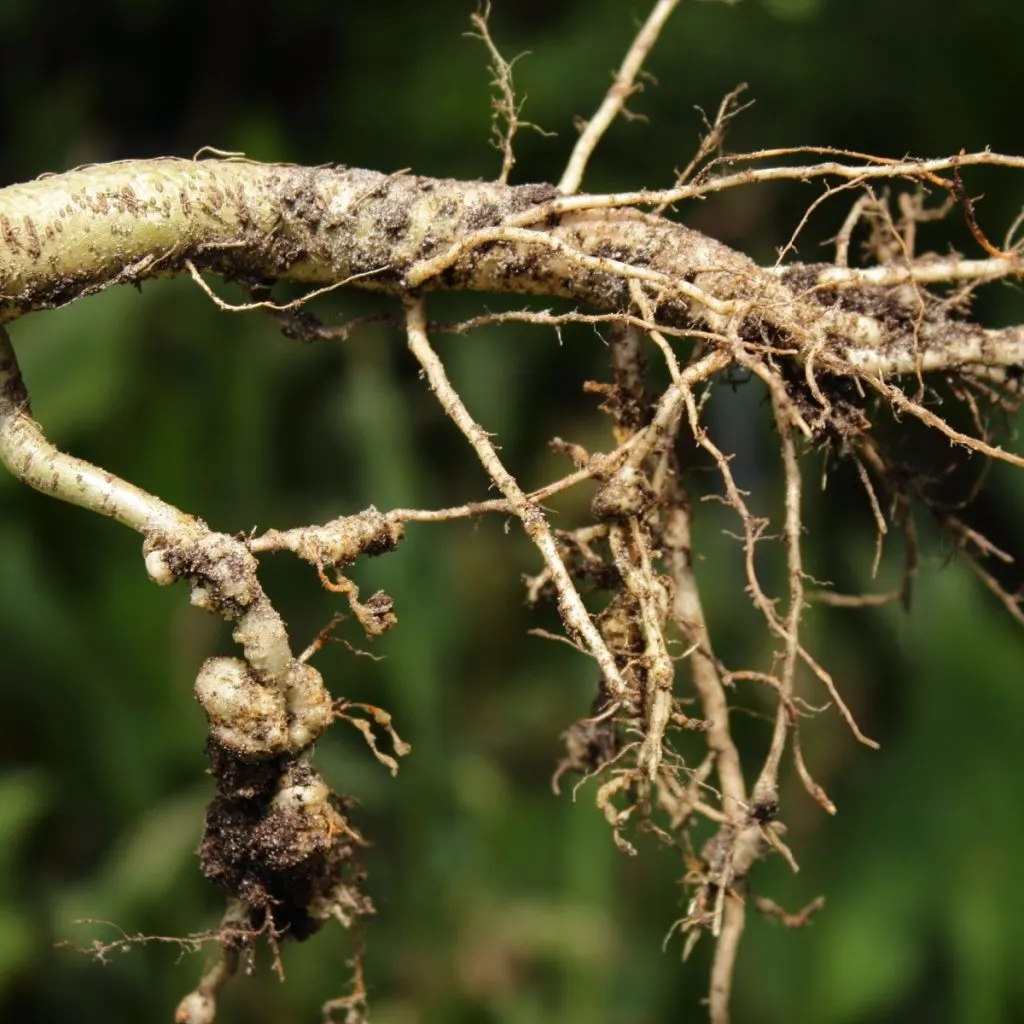
In addition to affecting tomato plants, root knot nematodes can also cause damage to peppers, carrots, okra, and other vegetable crops in your garden. And since these pests live below the soil, it’s not always easy to recognize an infestation until the damage has already started.
Thankfully, there are a few ways you can handle an infestation to save your tomato plants – as well as a few more steps you can take to prevent root knot nematodes from ruining future crops.
4 Ways To Stop Nematodes From Damaging Your Tomatoes
What Are Nematodes
Root knot nematodes are parasitic thread-like roundworms that live in the soil. They are more common in locations that experience hot climates and shorter winters.
Root knot nematodes cause damage by piercing the roots of the tomato plant and feeding on the nutrients within. Up to one-inch-sized knots (technically known as galls) are formed along the plant’s roots. Inside these knots, the nematodes hang out and reproduce.
If you were to dig up an infected plant, you would see these knots all along the small feeder roots. As the population of the nematodes increases, so does the amount of knots that form on the plant’s roots.
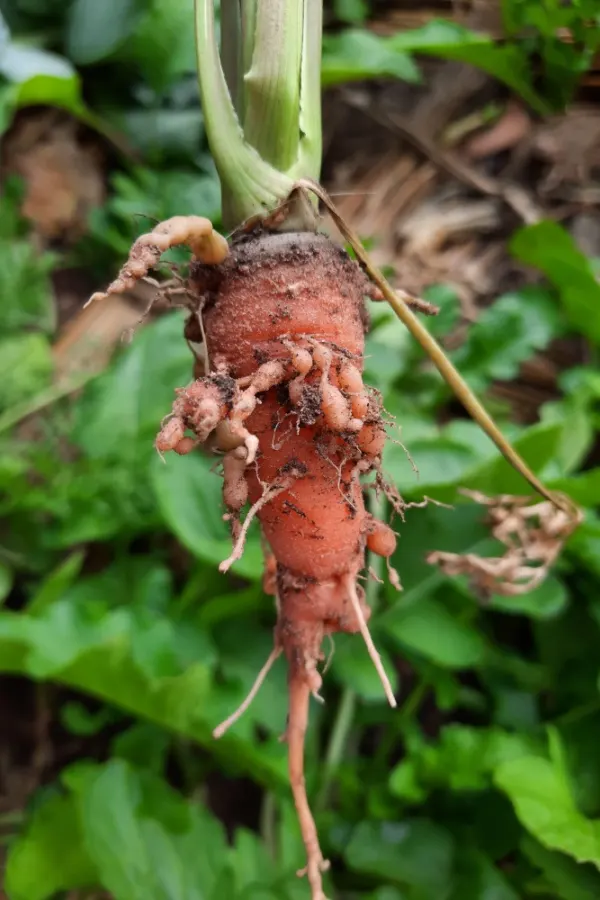
The nematode lifecycle includes eggs, larvae, and adults. The length of the life cycle depends on the soil temperature and the host plant, but it usually lasts around a month – meaning multiple stages could be present in your soil at the same time.
Unfortunately, the parasite can also overwinter at any stage during its lifecycle. That, of course, means that your nematode issue will continue affecting future crops as well unless it is taken care of.
How To Recognize Nematode Damage
While most damage happens below the soil surface, there are also symptoms of nematodes that can be recognized above the ground as well. These are much more noticeable with larger infestations.
One of the most obvious signs of their presence is yellowing plants. These plants also typically show signs of stunted or uneven growth and poor yields. If left unchecked, plants can eventually succumb to the damage, often long before the growing season is over.
Even though many different issues can cause yellowing plants, a good indication of nematodes is that not all of the tomatoes in your garden have signs of yellowing or stunted growth. With root knot nematodes, only a few plants will show signs of yellowing in a small area where they live.
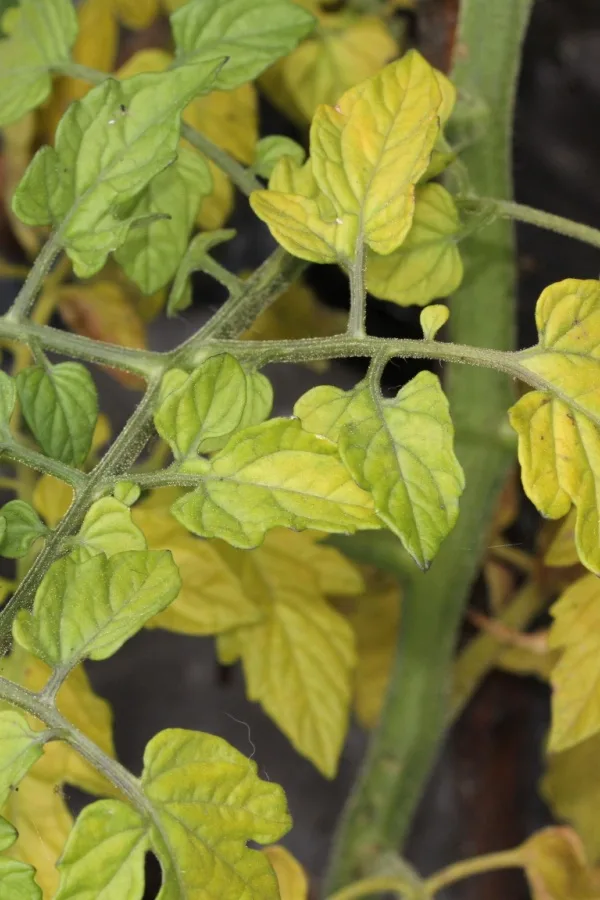
This is because the nematodes stick close to the plant they are infecting. This can cause just a few plants to show signs of issues while other nearby tomato plants are problem free. If you suspect damage from nematodes, the most obvious way to know for sure is to dig up one of your plants and look for the knots on the roots.
There are many different chemicals and sprays available to help control nematodes. However, these items usually come with a whole host of issues and safety concerns. Especially when you consider you would be applying them around the very tomato plants whose tomatoes you want to consume! Thankfully, there are effective natural methods you can implement instead.
4 Ways To Fight & Stop Nematodes
#1) Crop Rotation
One of the best ways to help control a nematode infestation is to practice crop rotation. While this tip won’t necessarily help the current year’s infestation, it will make a huge difference for the following years.
With crop rotation, the goal is to move your crops around to different locations. This prevents a crop from growing in the same spot for at least 3 to 4 years. This helps to eliminate many soil-borne issues that tend to plague crops like tomatoes, cucumbers, peppers and more.
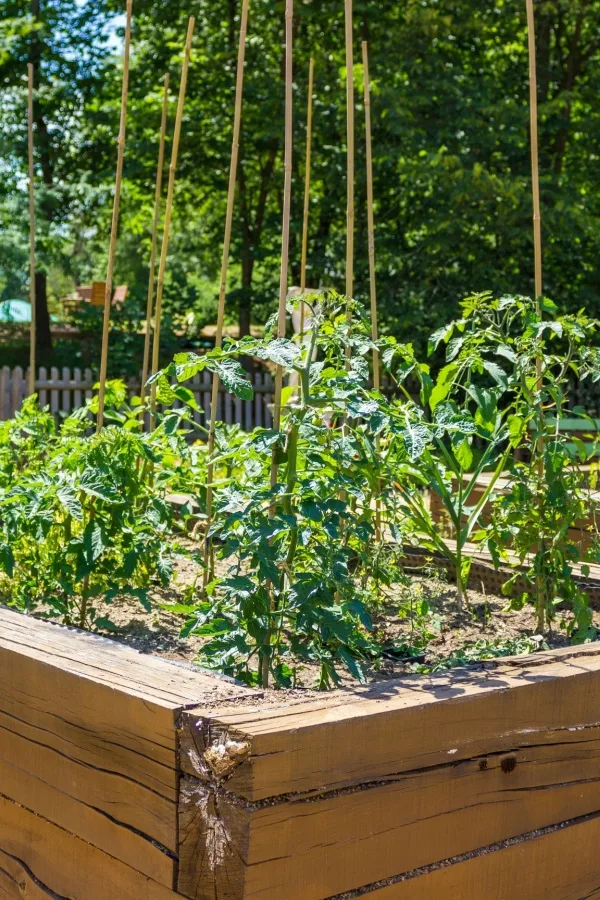
Root knot nematodes tend to attack only specific crops like tomatoes. By making a point to grow different crops in the same space each year, you can slow down or stop the buildup of nematodes.
In addition, limit your use of tilling when you have a nematode infestation. Tilling moves around the soil, inadvertently spreading the nematodes around.
#2 Planting Marigolds – How To Stop Nematodes From Damaging Tomatoes
Along with crop rotation, planting marigolds along with your tomatoes can help stop nematodes from damaging your plants. They are one of the few plants that produce a substance that actually eliminate nematodes.
The roots of marigold plants are toxic to the parasites. As the nematodes feed on the roots and create their knots, they are unable to develop further and eventually die.
While most marigold varieties can help against nematodes, French marigolds seem to be the most effective. (For more information about how marigolds help tomato plants, see our article Why To Plant Marigolds With Tomato Plants)
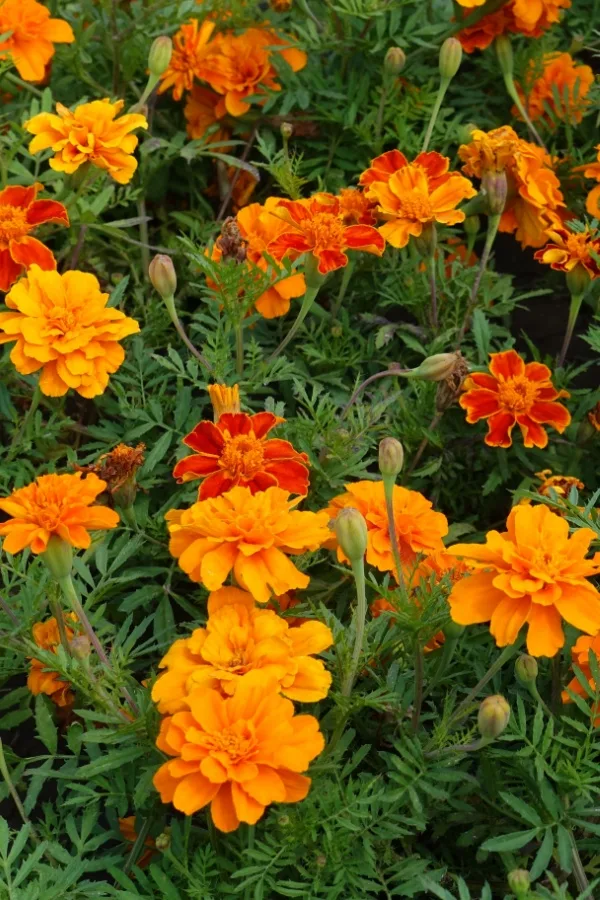
To work, create a barrier of marigold plants around your tomato plants. Keep plants no further than 7 to 8 inches apart. The nematodes will still try to feed on the other plants nearby. However, the marigolds will help to eliminate or at least greatly reduce their population.
#3 Using Cover Crops – How To Stop Nematodes From Damaging Tomatoes
Soil supplements such as cover crops are another great natural way to stop nematodes from destroying your tomatoes. Cover crops are used during the off growing seasons in your garden to help prevent bare soil.
There are many different advantages to using cover crops like preventing soil erosion and improving the organic matter in the soil. However, helping to eliminate nematodes is another added benefit.
The key is to use the right type of cover crop that is not a good host for root knot nematodes. Since nematodes do not move easily within the soil, the nematodes eventually die off with no host plants available for feeding.
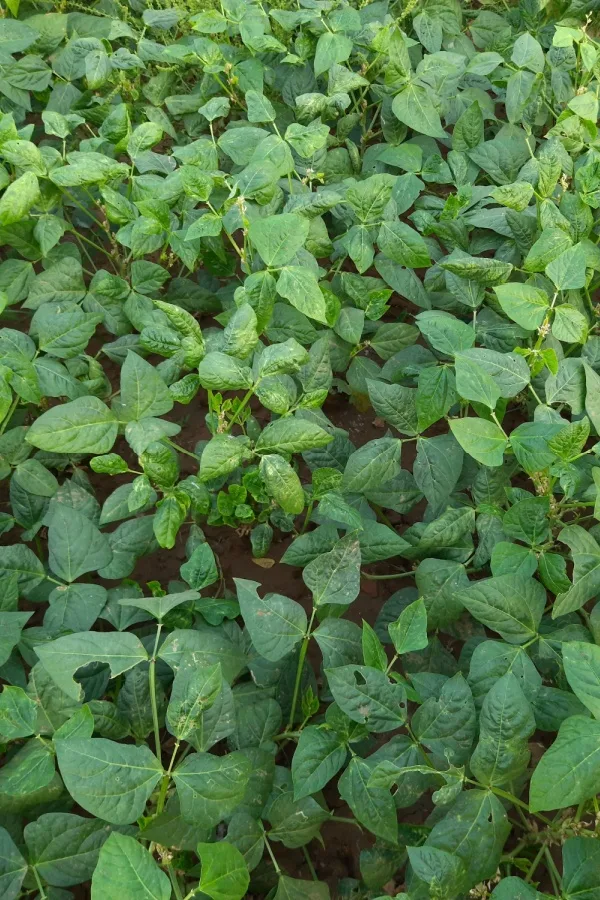
The best types of summer cover crops are cowpea, hairy indigo, sesame, sorghum-sudangrass, and marigolds. Winter rye, oats, hairy vetch, and other cereal cover crops are all excellent choices for winter coverage.
Avoid using cover crops that are leguminous. These cover crops can actually increase the population of root knot nematodes.
#4 Grow Resistant Varieties – How To Stop Nematodes From Damaging Tomatoes
In combination with the other ways of stopping nematodes from damaging your tomatoes, your best bet is to plant and grow resistant varieties.
Thanks to new hybrids, there are several excellent tomato varieties available that are resistant to root knot nematodes. Resistant varieties prevent the nematodes from developing and reproducing normally.
When choosing your tomatoes, look for “VFN” on the label or the mention of being nematode resistant. These plants are resistant to Verticillium, Fusarium, and Nematodes. While resistant plants can still experience some nematode damage, it won’t be extensive and the plants can withstand the attacks without a loss of yields.

Some examples of nematode resistant varieties include Big Beef Plus, Early Girl Bush, and Supersteak Hybrid. Product Links: Park Seed ‘Big Beef Plus’ Seeds, Burpee ‘Bush Early Girl’ Hybrid Seeds, and Burpee ‘SteakHouse’ Hybrid Seeds
By implementing these four simple tips, you can help stop nematodes from damaging and ruining your tomatoes for this growing season and for future ones!
I Grow Tomatoes
Follow Our Facebook Page For Even More Great Tomato Growing Tips! I Grow Tomatoes Facebook Page
I Grow Tomatoes is a website created for those who love all things about tomatoes – from planting and growing – to cooking and canning! We publish two articles every week, 52 weeks a year. Sign up today to follow via email! This article may contain affiliate links.
